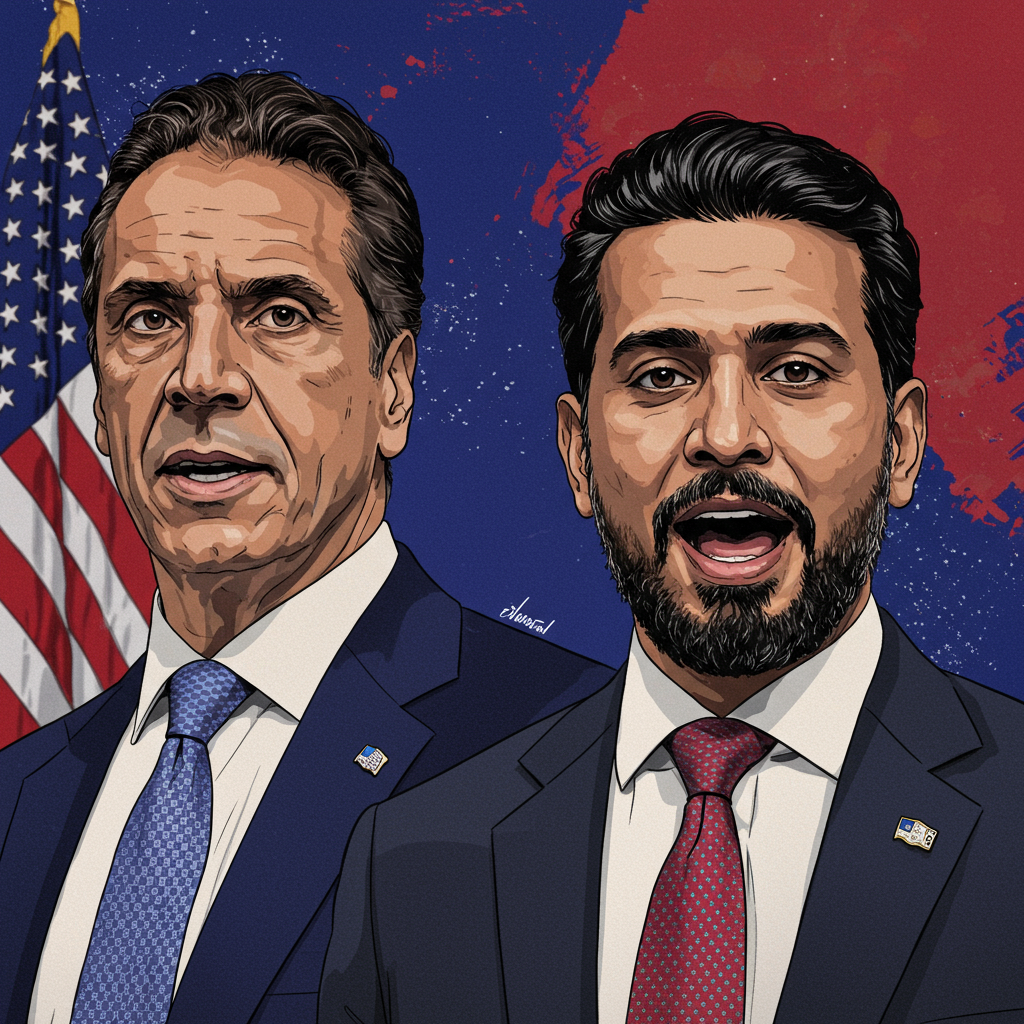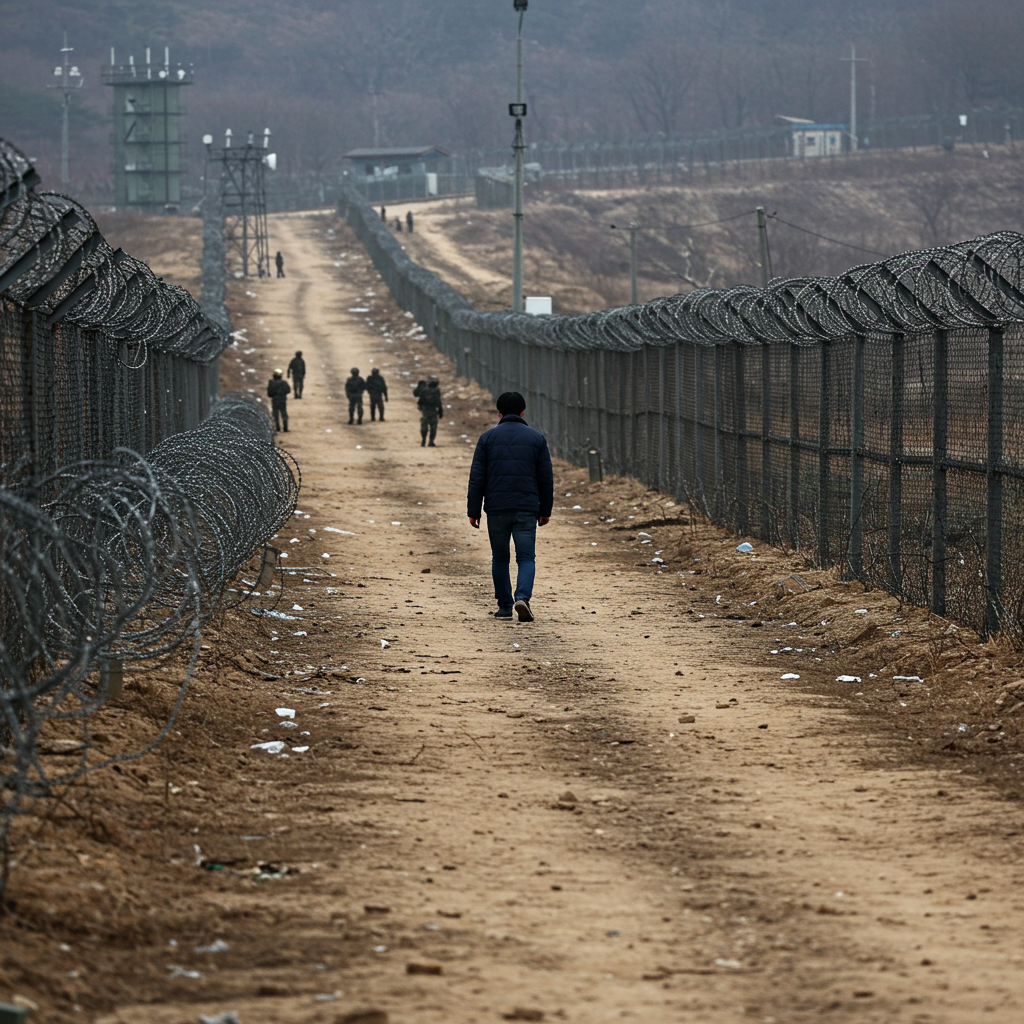New Yorkers are casting their ballots today in a pivotal Democratic mayoral primary election, a contest widely expected to determine the city’s next leader and potentially signal shifting dynamics within the Democratic party itself. While many eyes initially focused on former Governor Andrew Cuomo, a surprising new poll on the eve of the election suggests a dramatic shift, showing progressive challenger Zohran Mamdani potentially pulling ahead once ranked-choice votes are tabulated.
The race has largely narrowed to a two-person battle contrasting two distinct visions for the city. On one side is Andrew Cuomo, the 67-year-old former governor, representing a more centrist wing and backed by establishment figures and significant donors. Challenging him is Zohran Mamdani, a 33-year-old democratic socialist Assemblyman from Queens, who has garnered strong support from the party’s progressive faction, including endorsements from national figures like Alexandria Ocasio-Cortez and Senator Bernie Sanders.
The Poll That Changed the Narrative
A recent Emerson College Polling/PIX11/The Hill survey has upended earlier predictions. While the poll indicates Cuomo holds a narrow lead in initial first-choice votes (around 35% to Mamdani’s 32-34%), the picture changes significantly under New York City’s ranked-choice voting (RCV) system.
The simulation based on this poll projects Mamdani ultimately defeating Cuomo in the final round of counting, securing approximately 52% of the vote compared to Cuomo’s 48%. This represents a significant shift from previous Emerson polls and marks the first time Mamdani has led in their final RCV simulation. The pollsters note Mamdani’s support has surged dramatically in recent months, rising from just 1% to a competitive 32% in the first round.
Ranked Choice Voting: The Key Factor
New York City’s primary utilizes ranked-choice voting, a system where voters can rank up to five candidates in order of preference. If no candidate achieves over 50% of the initial first-choice votes, candidates with the fewest votes are eliminated, and their voters’ subsequent preferences are redistributed. This process continues in rounds until one candidate surpasses the 50% threshold.
Political analysts highlight RCV as a critical factor benefiting Mamdani. Simulations show he receives a substantial transfer of votes from other progressive candidates as they are eliminated, particularly benefiting from supporters of City Comptroller Brad Lander, another progressive who publicly cross-endorsed Mamdani as a preferred alternative. This vote transfer appears crucial to Mamdani’s projected RCV victory in the Emerson poll.
Mamdani’s Surging Progressive Movement
Mamdani’s campaign has been fueled by a progressive platform advocating for policies like freezing rent increases and implementing free citywide bus transportation. He boasts a significant online presence and has successfully mobilized supporters through large rallies.
His surge is particularly notable among key demographics. Early voting figures show a significant increase in turnout compared to 2021, with over 380,000 early votes cast. Crucially, voters under 40 accounted for 40% of the early electorate. Poll data confirms Mamdani’s strength with this age group, with one survey showing 60% of 18-34 year olds ranking him first, compared to just 10% for Cuomo. Mamdani also shows strong leads among white, Asian, and college-educated voters.
Cuomo’s Experience and Counter Strategy
In contrast, Andrew Cuomo, who resigned as governor in 2021 following numerous sexual harassment allegations, has run a less public campaign, favoring controlled appearances over large rallies. Backed by centrists and some donors (reportedly including some Republican figures), his campaign has focused on his experience, emphasizing core city services, safety, and addressing issues like homelessness.
As Mamdani’s challenge intensified, Cuomo’s campaign and allied Super PACs reportedly spent millions on mailers and TV ads largely attacking Mamdani, questioning his experience and policy proposals. Cuomo retains strong support among older voters, as well as Black and Hispanic voters, and those without a four-year college degree.
Conflicting Polls Create Uncertainty
While the Emerson poll points to a potential Mamdani victory via RCV, it’s not the only survey in the field. A separate HarrisX poll commissioned by a pro-Cuomo Super PAC presented a starkly different outcome, showing Cuomo with a significant first-round lead and a comfortable RCV win. A Marist poll released last week showed Cuomo leading, but with Mamdani closing the gap, and Marist’s RCV simulation also projected Cuomo winning in later rounds.
These conflicting results underscore the uncertainty surrounding the race heading into Primary Day. Adding to the suspense, the nature of ranked-choice voting means the final results may not be clear tonight, with official RCV tabulations potentially taking until July 1st to complete.
The winner of the Democratic primary is highly likely to become the next mayor of New York City, given the significant advantage registered Democrats hold over Republicans. The incumbent, Eric Adams, who won in 2021 as a Democrat, is running as an independent this year and faces low approval ratings and past legal challenges that were recently dropped.
As New Yorkers head to the polls, the stage is set for a potentially dramatic outcome, with the ranked-choice voting system poised to play a decisive role in determining whether a progressive surge can overcome the establishment presence of a former governor.




